A year ago, I introduced you to the Sunology solar station, a Plug&Play solution for quickly reducing your electricity bill. Designed and assembled in Brittany, France, it quickly became one of the best solutions for reducing your electricity bill, competing with competitors like Beem, Ekwateur, or Supersola, for example. However, the manufacturer isn't idle and has just launched a new version of its flagship product: Sunology PLAY Recto Verso. Still at the same price, but with increased production power thanks to the use of a bifacial panel! For those new to this type of product, this is a photovoltaic station that you can install yourself in 2 minutes. It simply requires plugging in a power outlet, and its energy production is directly deducted from the electricity you consume. Given the rising price of electricity, this type of installation is very attractive. And this is the most productive solution I've had the opportunity to test, with a panel advertised for 405Wp, capable of reaching up to 527Wp thanks to its two sides! All while maintaining ease of installation, taking only a few minutes. Installed in my home for a little over a month now, I invite you to discover it in more detail! Discovering the Sunology PLAY Recto Verso solar stationThe package I received is rather imposing, and for good reason: it contains a large photovoltaic panel measuring 1.75m x 1.2m (and weighing 32kg alone). Inside, there are four components: the 405Wp panel, completely black (full black model), two ballast trays, an assembly guide, and a Wi-Fi meter in the form of a connected outlet.The panel is mounted on a black anodized aluminum structure (75% recycled), designed to be highly versatile. In addition to being able to be placed or fixed, it can also be oriented at three different angles. Sunology was the first photovoltaic solution to offer this, and the manufacturer naturally maintains this strength, even though it has been widely copied today by competitors. While the structure is lighter than that of a Sunethic or Supersola, it is nonetheless robust, as you can see: The panel does not rest directly on the ground, but on its support. The 405Wp photovoltaic panel is from DEMGC Solar, a well-known international manufacturer in the field. Here, we have a monocrystalline panel, equipped with 120 half-cells, capable of producing 405Wp. The use of half-cells limits losses due to the Joule effect: in summer, during heat peaks, production is normally reduced on photovoltaic panels, so contrary to popular belief, July and August are not always the most productive months of the year. The use of half-cells here allows for high production power.This panel uses PERC technology: with almost 100% usable surface area, this technology, which uses overlapping solar cell welding, provides maximum efficiency, starting earlier in the morning and finishing later in the evening.
But the great originality of this panel is that it is a bifacial model: the photovoltaic cells are sandwiched between two glass plates, so they can produce both at the front and the back. Production will not be doubled, but it will benefit from a 5 to 30% increase in output. We will come back to this later. Cells let light pass between them
While competitors generally offer a 5-year warranty on the kit, sometimes with a distinction between the panel and the inverter, Sunology guarantees the complete kit for 25 years, which is no small feat! There's no distinction between the panel and the inverter; it's 25 years for everything, period.
All the wiring and electronics are located under the panel, including, of course, the microinverter (maximum efficiency of 99.8%), which is already installed:
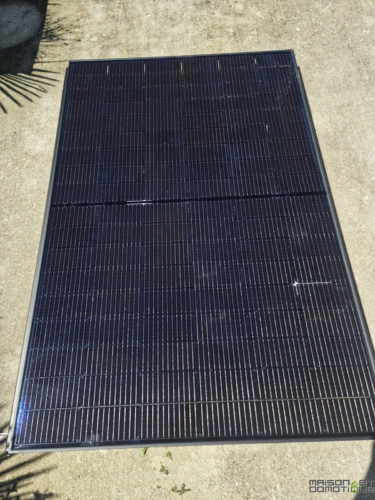
Only the electrical outlet and its 3m cable protrude from the installation. Note that the inverter also has a socket to accommodate another extension kit, allowing you to connect multiple panels together:
The extension socket is equipped with a cap to protect it.
The panels are thus very easily connected via this single socket: Completely black, whether for the support or the photovoltaic panel, this station is quite attractive. A completely black panel, which still reveals the cells, allowing light to pass between them. The two ballast tanks, made of expanded polypropylene (EPP), can accommodate a concrete slab (less than €5 per slab in DIY stores) or simply be filled with sand or gravel to hold the solar panel in place.

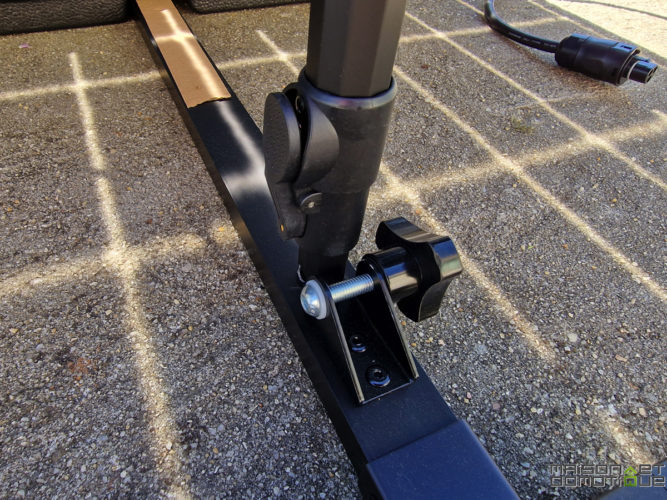

It's an outdoor smart plug, equipped with a cover to withstand the elements (the model may vary depending on availability, but the principle remains the same).
So let's move on to installing this Sunology PLAY Recto Verso station…
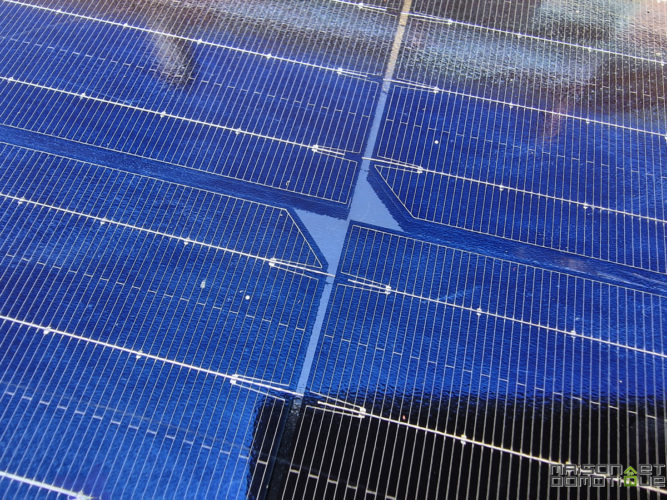
Installing the Sunology PLAY Recto Verso solar station
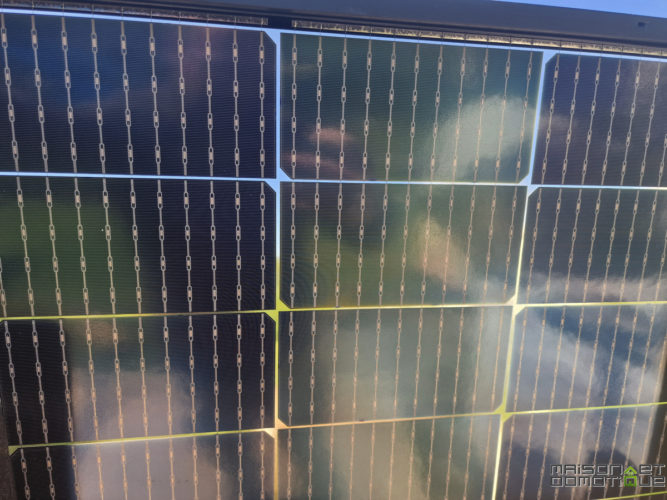
Just two screws in place, and you're done.
Then position the solar station in the desired location, with good sun exposure, ideally facing south. Adjust the panel's height to give it the correct orientation. As mentioned above, the Sunology PLAY Recto Verso station can be positioned at three angles. Two “handles” on the vertical bars at the back allow you to slide the support into the desired position:

This system allows you to slide the support bar to adjust the panel's tilt.
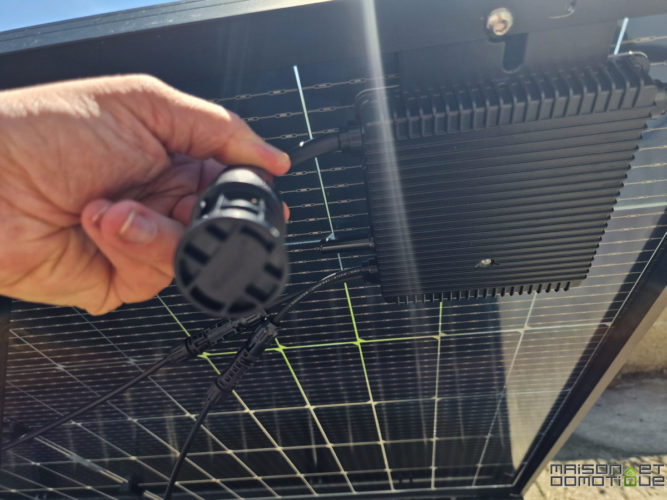
Intermediate position: spring/fall

Winter position
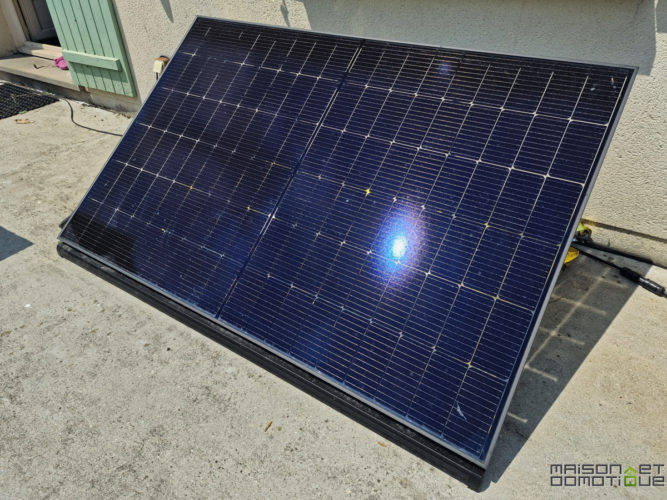
The 3m cable will allow enough space to connect the panel to a nearby electrical outlet.
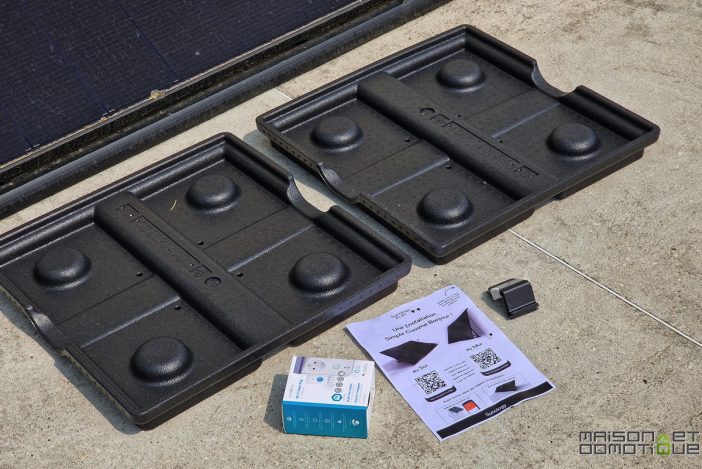


From now on, our panel will begin producing electricity, and our nearest appliances will begin consuming this “free” electricity.
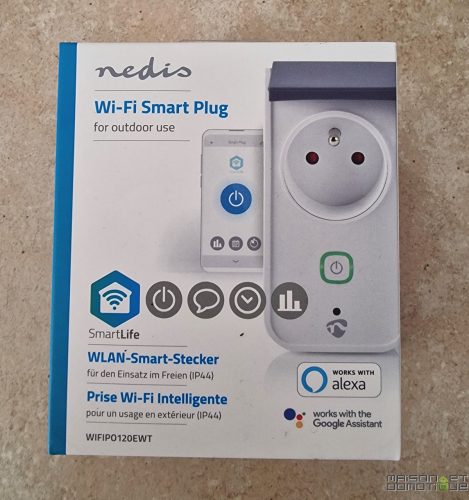
Installation takes just 2 minutes, which is very fast! You will simply need to find a place well exposed to the sun, ideally facing south, without any shade, in order to optimize solar production. Here, the station was simply placed on my terrace, facing south. Ideally, positioning on a flat roof will be more secure, but the terrace works very well, as long as you have the space :)
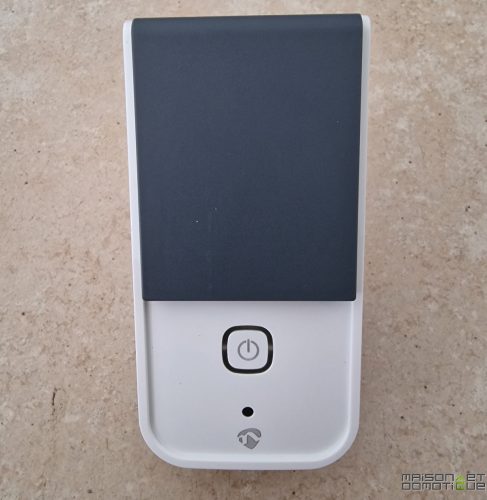
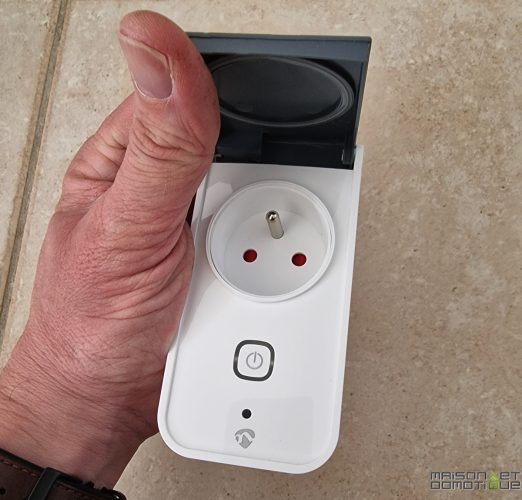
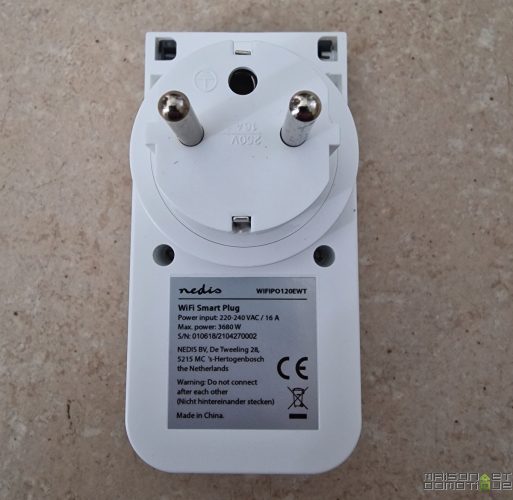
Small detail however to optimize the positioning: here we have a bifacial panel. What does this mean? A traditional photovoltaic panel only captures the sun's rays from above, to produce electricity. This type of panel is made up of photovoltaic cells placed on an opaque side, to ensure rigidity, all protected by a window. In the case of a bifacial panel, the opaque side disappears: instead we also have a window. In other words, the photovoltaic cells are sandwiched between two glass plates, which allows light to pass between the cells:
This bifacial technology has two interests:
the top side captures the direct rays of the sun
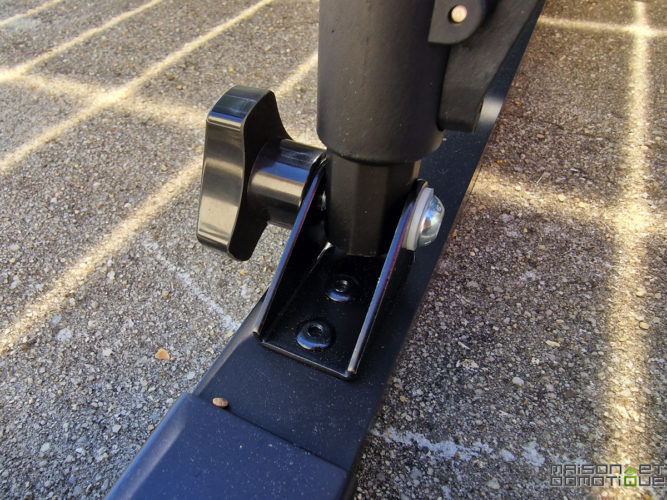
albedo

To fully benefit from this dual Kiss Cool effect, you'll of course need some space under the panel. This type of bifacial panel is therefore not suitable for roof mounting. However, on a support like the Sunology one, it's perfect, especially when the panel is very upright: the steeper the slope, the greater the efficiency of the rear panel! This will be particularly beneficial in winter, when the sun is low and the panel is normally vertical. This rear-facing production will help compensate for some of the loss of production due to the season.
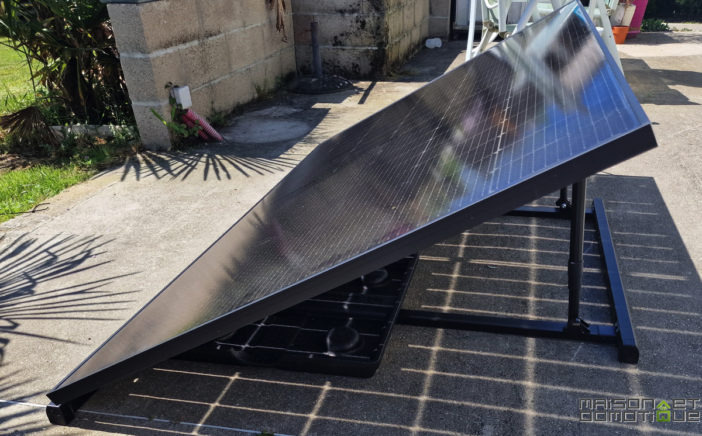

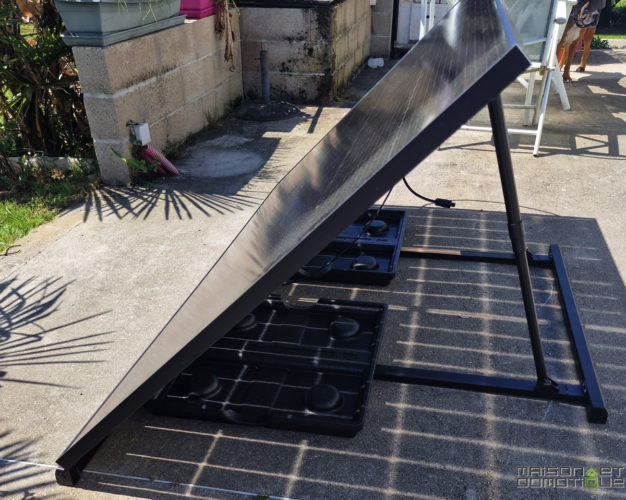
Asking to add a new device: the connected outlet is automatically detected.
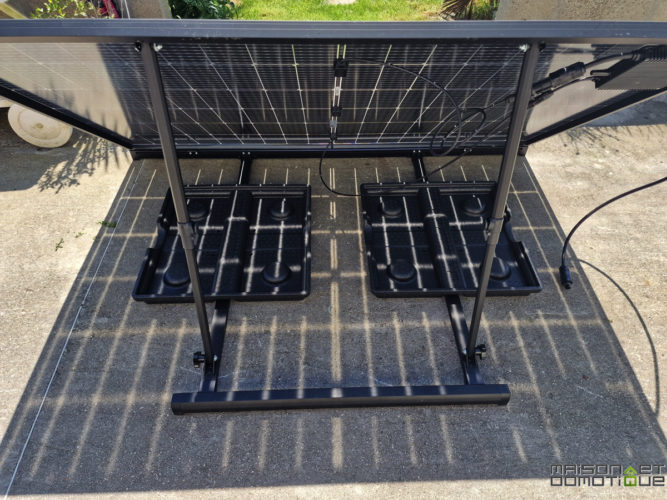
Configuring the Wi-Fi and confirming. You simply need to have a 2.4Ghz Wi-Fi network accessible at the location where the Sunology PLAY Recto Verso solar station is located. This is a point to check carefully because Wi-Fi coverage is often poor outdoors, unless, for example, you install an Outdoor Wi-Fi hotspot like Orbi offers.
The home screen of our plug is really that of a classic smart plug, with an On/Off button. Of course, you'll have to make sure to turn the plug On, otherwise you won't be able to collect your solar production. To monitor your production, click on the “Electric” icon in the bottom right.
You'll then see a screen with the current power and the production since the beginning of the day. Here, for example, we see that our power is 331W, and that we've already produced 1.48Kwh since the beginning of the day.
Below, clicking on one of the months displays the day-by-day breakdown in graph form. This allows you to view your production day by day, month by month.

You'll find the same type of information as what ekwateur or Supersola offer, for example. The app is significantly less user-friendly than Beem's, but let's just say it gets the job done. Afterwards, since the system uses a simple connected outlet, nothing prevents you from using a connected outlet with consumption monitoring that's compatible with your system, via Wi-Fi, Zwave, or ZigBee, for example, to retrieve the information in your Jeedom, eedomus, or Home Assistant system (or others!). There, you'll be able to display the data as you wish, perform efficiency calculations, receive a report, etc. This is what we saw here with ZigBee outlets.
- Interesting detail: the inverter used by Sunology is also OpenDTU compatible, meaning it's possible to retrieve all production information via a wireless connection. All you need is an OpenDTU box, which then allows you to use all this data in Jeedom or Home Assistant, for example.OpenDTU retrieves all possible information from the inverter.
In short, if the outlet isn't enough for production monitoring, there are many other ways to track it ;-)
Sunology PLAY Recto Verso Solar Station: How Does It Work?
If you're new to this type of self-consumption station, you might be wondering how it works. Solar panels that plug directly into an electrical outlet? Doesn't plugging a power source into an outlet that's already powered risk tripping the meter? Etc.
An electrical outlet works both ways. When you plug your toaster into the outlet, you draw power. If you plug a solar panel into the same outlet, the current flows back the other way to your meter. If it encounters an appliance that consumes energy along the way, it will offset all or part of it. If you produce more than you consume, the surplus will benefit your nearest neighbors.
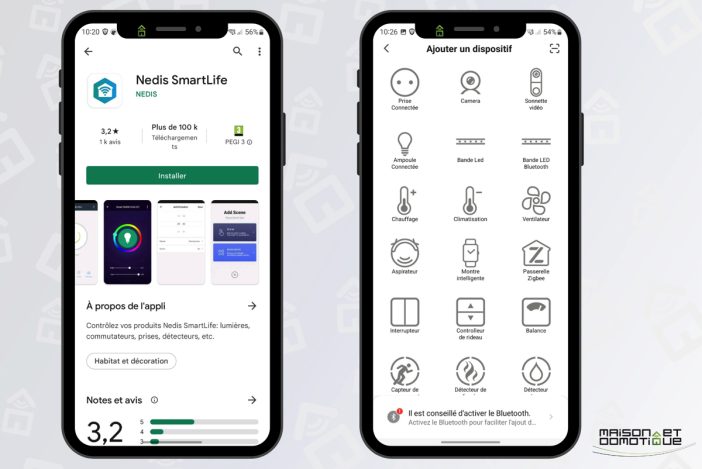
Sunology
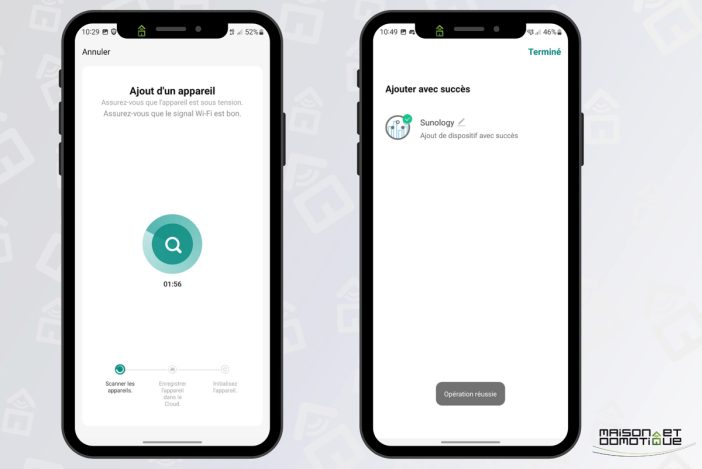
In fact, it works based on two things. First, the inverter synchronizes with the electrical grid to operate. As a result, it doesn't work in the event of a power outage (a shame, but it's also a safety feature for those working on the power grid), and it can't work in an isolated location (also a shame :p) that isn't connected to the power grid (like my property deep in the woods, for example). On the other hand, this also prevents electrocution if you touch the kit's plug: as long as it's not plugged into a power outlet, no current flows. So, there's no risk for children either.Note that it's still possible to connect the Sunology PLAY Recto Verso to a battery when you want to store the day's energy or when you're “off the grid.” Sunology explains this in detail here. Once again, it's the only manufacturer to clearly explain this use.
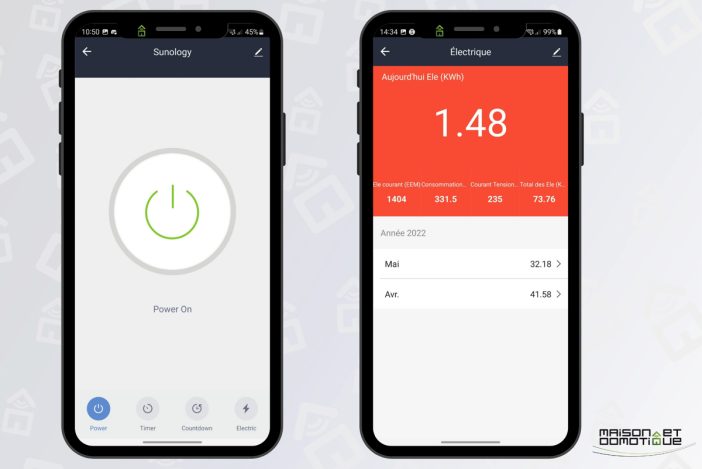
Then, the system relies on a simple rule of physics: electrons take the shortest path. Like any fluid, in fact.
In practice, solar panels capture the sun's rays and transform the photons into electrons. The inverter, synchronized with the electrical network, injects solar electrons into the electrical circuit of the home. The solar electrons diffuse and will power the closest electrical devices which consume at the same time. Thus, for each solar electron produced and consumed by a device in the home, it is an electron from the electrical network which does not pass through the meter, and which is therefore not billed.
This little animation perfectly illustrates the principle:
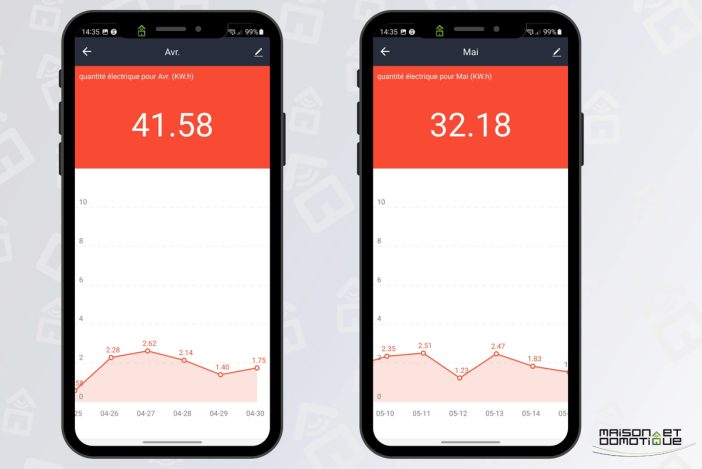
The goal is not to produce as much electricity as we consume each day, since that would require a much larger and more expensive installation. The goal is to remove the “electric heel” from your home. The electric meter is the minimum electricity consumption in your home, which is present no matter what, even when no one is at home. It corresponds to the consumption of the fridge, internet box, home automation box, VMC, devices on standby, etc. If you do not turn on any specific device, and you take a look at your electricity meter, you will see that it still displays electricity consumption which easily reaches 300w in general. The consumption bill represents 10 to 20% of your annual energy needs, or between 300 and 1500 kWh per year! It is this consumption that we are trying to eliminate with the Sunology PLAY Recto Verso solar station. If your electric heel exceeds the 300 to 400w generally found in most homes, it is possible to multiply the stations (up to 4 per circuit breaker / electrical line).And the regulations in all this?
The strong point of the Sunology solar station is that it can be installed anywhere, without complicated formalities. If the panels are installed on the ground or less than 1.80 meters high, no declaration is required at the town hall. The only thing to do is to sign a Self-Consumption Agreement Without Injection (CACSI) with Enedis, the company that manages the electricity grid. The declaration is made directly online at https://connect-racco.enedis.fr/prac-internet/login/. The declaration takes less than 10 minutes, with the manufacturer providing all the necessary information on its website.The big question: profitability
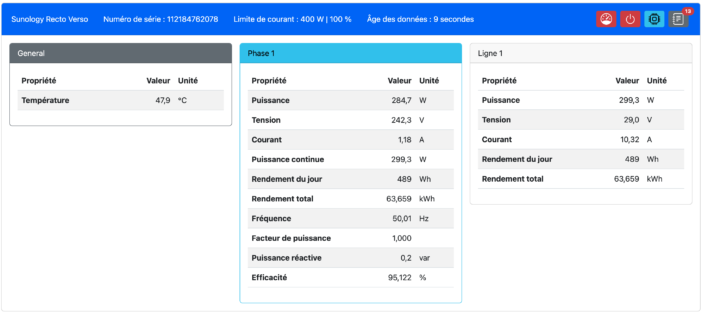
Beem Review: The DIY solar kit to save electricity! 48
We can feel the good weather coming…
Getting back to profitability, I'm based south of Orléans. For this region, statistics indicate an average production of 500kWh/year. This
site
provides an estimate based on your address, but does not take into account the specificity of bifacial solar panels. This allows for productivity improvements of 5 to 30%. I was able to compare the productivity of the old version and the new bifacial solar panel, placing the two versions side by side to benefit from the same exposure. As we can see, the bifacial version clearly offers better performance than the old version, with at least the additional 5% announced by the manufacturer:
In blue, the production curve for the double-sided version, in orange, the old version.
Unfortunately, productivity for the underside isn't optimal. As I mentioned above, the ideal is to have a reflective surface under the panel, such as a light-colored wall or floor. The support bars, and especially the ballast trays, break up this reverberation by adding dark-colored areas. Fortunately, there are various tricks to improve this. Simply by placing a survival blanket
under the panel, for example, which has the advantage of not costing much. You need to secure or weight down the survival blanket; otherwise, it's very light and easily blows away. This is an inexpensive trick to improve reverberation under the panel. Other users have placed metal or mirror-effect plates to also improve production. There's no shortage of ideas!

Rest assured, these techniques are for those who really want to maximize production. But without doing anything other than installing the station as is, it still remains the solution offering the best production to date.
Of course, the geographical location has a significant impact, since in the Var region it's possible to achieve up to 670 kWh/year. A significant difference!
In Orléans, if I take an average of 550 kWh per year thanks to the small gain from the bifacial system, and at a rate of €0.2228 per kWh (currently the EDF rate during peak hours), this represents a saving of €122/year.
Therefore, if we take into account an increase of 5% / year (while remaining optimistic), we can bank on these savings on the bill each year:
(2023) first year: €122
(2024) second year: €128
(2025) third year: €134
(2026) fourth year: €141 (2027) fifth year: €148 Which gives us a total of €673, or the amortization of the product after approximately 5 years. Yes, it may seem long. But in solar energy, we cannot count on immediate profitability today. Everything depends on time, the panels having a lifespan of more than 25 years. In regions further south, where there are more days of sunshine, production will be able to rise to 670kWh/year, which shortens the payback period to less than 5 years. Among the kits already tested, this is the one that pays for itself the fastest. It must be said that for a price substantially identical to its competitors, the Sunology PLAY Recto Verso offers the best productivity. Obviously, given the production surplus for the same cost, profitability turns out to be better on this model. And we are here with an optimistic perspective regarding the price of electricity. Just 2 years ago, profitability on this type of solar station flirted with 10 years. As we see with the increase in the price of electricity, this has already been almost halved. Then, aside from the financial aspect, as I always say, solar is also a conviction. As you know, I've had solar panels on the roof of my house for 13 years, with a resale contract with EDF. And on my isolated plot, without a connection to the electricity grid, everything is powered by solar panels. If I could be completely self-sufficient thanks to solar energy, with an installation I could afford, I'd be the first to sign up, if only to free myself from dependence on an external grid :p In short, personally, I'm convinced.Some will shout from the rooftops about the ecology, but the manufacturing process for panels and their recycling has evolved significantly in 10 years. Most panels are now certified low carbon: after one year of use, the energy required for their manufacture has been offset. As for recycling, this panel is 95% recyclable. And things will have changed even more by the time it's scrapped, with its lifespan given as 30 years by the manufacturer. But in reality, a photovoltaic panel has an enormous lifespan, and even if its output declines over time (85% efficiency guaranteed after 30 years), a panel can still be used for many years beyond its official lifespan. I know people who use panels that are 40 years old and still work perfectly, even though the technology was far inferior to today's.
Conclusion
I discovered this principle a little over two years ago now, thanks to my electricity supplier, ekwateur, when they launched their group purchase offer for their own panel. It was a bit of a surprise for me when I discovered the idea. Of course, while researching the subject, I quickly realized that several companies offered easy-to-install kits based on the same principle: we've already discovered Beem, Sunethic, and Supersola. Compared to the previous kits already presented, the Sunology PLAY Recto Verso solar station is undoubtedly the most cost-effective. The product is perfectly finished, practical, and easy to install. It's truly a solution within everyone's reach, extremely easy to install (you just need to know how to plug a device into an electrical outlet, which is normally within everyone's reach ;-). I particularly like its versatility, which allows it to be placed on the floor or mounted on the wall, without worrying about choosing the right model when ordering, or having to add options (aside from the wall mounts required). But above all, the ability to tilt it as desired, throughout the seasons, to always maintain optimal production. The first version was already a leading solution, but with this dual-sided version, offering greater productivity while maintaining the same price, Sunology maintains its lead over its competitors. Okay, as is often the case, the app is a bit of a weak point: it does the bare minimum, in an austere display. In this respect, no one has yet done as well as Beem :) But it gets the job done by allowing us to monitor production. Afterwards, it will be possible to use another connected outlet to retrieve its production in a more attractive interface, in Jeedom or Home Assistant, for example. Example of photovoltaic monitoring on Home Assistant for those who want to take things further…

So, should you invest in such a station? It's impossible to predict the future, and everyone will act according to their own beliefs. Personally, I'm convinced, and I simply base my investment on this rule: The best time to start investing was yesterday, the second best time is today, and the worst time is waiting until tomorrow. This is especially true with the news surrounding the rising price of electricity, which has been skyrocketing for several months, leading to the bankruptcy of small alternative suppliers. The only thing we know for sure today is that the price of electricity will continue to rise anyway. But this station, once purchased and installed, will continue to produce in the same way, unaffected by the market, inflation, war, politics, etc. In my opinion, it is one of the most sustainable investments available.


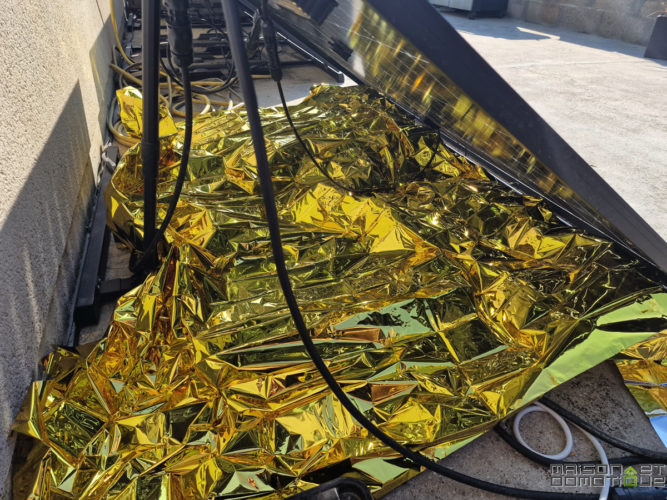
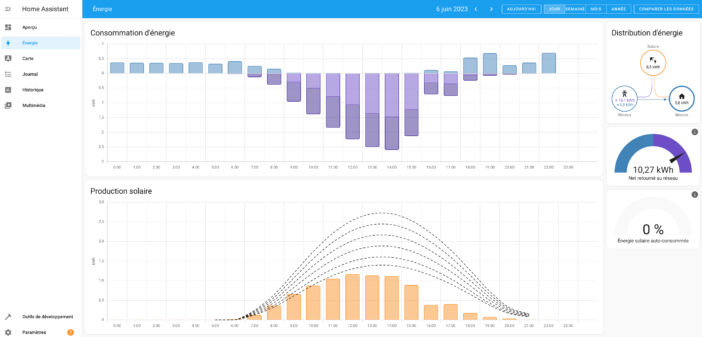

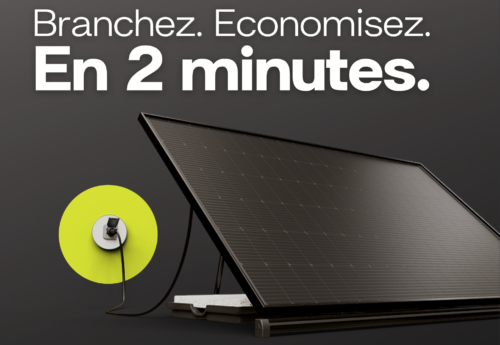
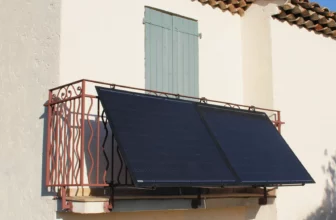
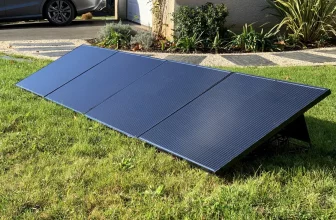
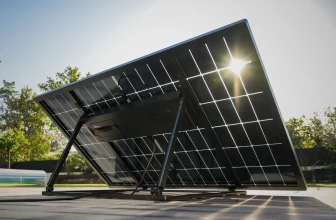
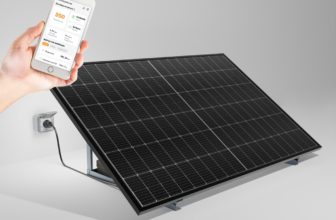

Please remain courteous: a hello and a thank you cost nothing! We're here to exchange ideas in a constructive way. Trolls will be deleted.